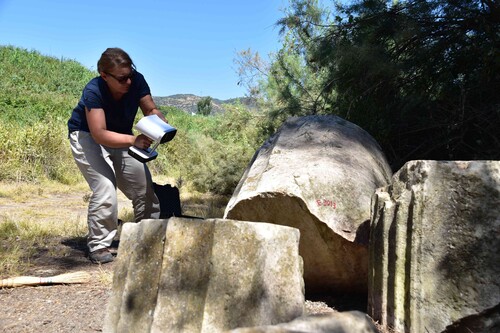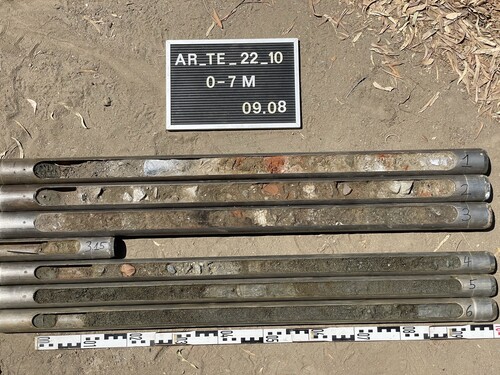Architectural research in the temenos area focused on the revaluation of the remains of a building structure northwest of the temple that had been uncovered in 1989-1991 by Anton Bammer. The precise documentation of the three-step substructure including a well preserved stylobate block in original position with 2 square dowel holes allows the reconstruction of a building with Doric colonnades. The lower column diameter (89 cm/ 3 feet), as indicated by the front edge of the stylobate block and setting lines marking the column center, corresponds with the diameter of a Doric capital (diameter 74 cm/ 2.5 feet) in the British Museum, which is one of 12 key elements of the "Building with Dorian Entablature" that J. T. Wood excavated in a small area south of the temple in 1874 and brought to London. Based on these blocks of Doric order, J. E. Goodchild already assumed a circumferential stoa around the temple.
The open-air depot west of the Artemision was also completely cleaned and examined for possible associated architectural objects. 14 Doric fragments of column drums and entablature blocks could be determined and documented with an handheld laserscanner and detailed hand drawings.
The results of the 2022 fieldwork support the previously hypothetical reconstruction and specify the location and dimension of a Doric peristoon that surrounded the temple on at least three sides.




Geoarcheology 2022
In August 2022, geoarchaeological fieldwork continued in the area of the Artemision with a set of core drillings done by Felix Köstelbauer in cooperation with Prof. Dr. Helmut Brückner (University of Cologne).
C-14 sampling and the analysis of soil and pottery material is expected to provide new insights into the process of sedimentation and coverage of the sanctuary after its abandonment in Late Antiquity.



